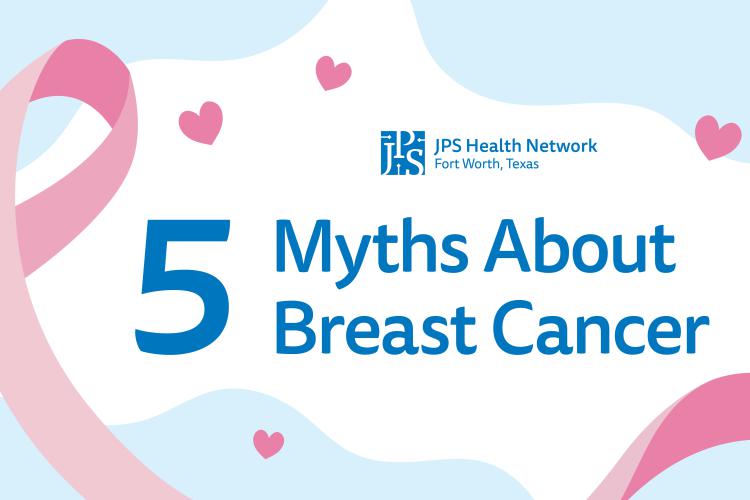

October is Breast Cancer Awareness Month, a time to raise awareness about breast cancer and inform individuals about their options for diagnosis and treatment. This month serves as an important reminder to get screened, but it’s also when misinformation can spread rapidly alongside accurate information.
To help distinguish between fact and fiction, Kalyani Narra, MD, Oncologist at JPS Health Network, is here to clarify some of the most common myths about breast cancer.
“The most important thing people should know is that treatments are available no matter what stage they present in,” Dr. Narra said. “There are multiple varieties of breast cancer, but for any kind, we have treatments available, and people should seek care and not hide it.”
Myth #1: Only women get breast cancer.
It’s true that breast cancer is more common in women, but men are not immune.
“Men get breast cancers too, but it’s rare,” said Dr. Narra. “When a man notices a breast lump, he should seek a workup. All males with breast cancer should undergo genetic testing for hereditary syndromes like the BRCA mutation.”
Myth #2: You only get breast cancer if it runs in your family.
While genetics can play a role, the majority of breast cancers aren’t hereditary.
“About 90 percent of breast cancers are sporadic, meaning they don’t have a family predisposition,” Dr. Narra said. “This is especially true in postmenopausal women. Breast cancers in younger women, under 45, and certain aggressive subtypes like triple-negative breast cancers tend to run in families.”
At JPS, about 25 percent of triple-negative breast cancer cases are linked to a genetic mutation. That’s why genetic testing can be a powerful tool for prevention and family planning.
“If we find a BRCA mutation, we encourage testing for close family members, such as sisters, daughters, and even sons, so we can take preventive steps before cancer develops,” said Dr. Narra.
Myth #3: Larger breasts mean higher risk.
Breast size itself isn’t a risk factor, but body composition can play a role.
Maintaining a healthy weight through exercise and balanced nutrition can help lower overall risk and improve health outcomes during treatment.
Myth #4: Mammograms expose you to dangerous levels of radiation.
“According to the American Cancer Society, a mammogram exposes a woman to about 0.4 mSv, roughly the amount a person would get from natural background exposure over seven weeks,” said Dr. Narra. “This is not at all a dangerous level.”
At JPS, mammography screening is robust and accessible, giving patients peace of mind that care doesn’t stop at the scan. If something abnormal is found, radiologists are on-site to review results immediately. “If a biopsy is needed, it’s typically done the same day by a trained breast radiologist,” said Dr. Narra.
Myth #5: Young women don’t get breast cancer.
“No age is safe from breast cancer,” Dr. Narra said. “While it’s more common in postmenopausal women, I’ve treated patients as young as 22 who had no family history and tested negative for genetic syndromes.”
If you notice changes in your breast, a lump, nipple discharge, or persistent pain, don’t wait for your next mammogram to get checked.
“Breast cancer is not a death sentence,” said Dr. Narra. “There are more survivors of breast cancer than any other cancer, which is a good thing.”
Thanks to advanced therapies and clinical trials, outcomes are improving every day. “No matter what stage or type of breast cancer, we have treatment options,” said Dr. Narra. “At JPS, we even have clinical trials, including new ones for triple-negative breast cancer, which is my area of focus.”
To learn more about the Oncology Services offered at JPS Health Network, https://jpshealthnet.org/get-care/services/cancer.
